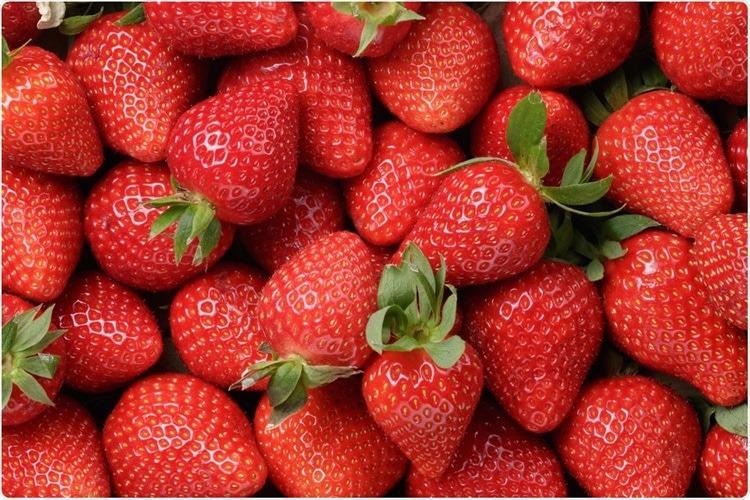A new finding written in the journal Science of The Total Environment involving CuO2 nanoparticles has shown an increase in the yield and quality of strawberries after exposure.

Study: Physiological and proteomics analyses reveal the effect of CeO2 nanoparticles on strawberry reproductive system and fruit quality. Image Credit: GCapture/Shutterstock.com
Nanoparticles in Agriculture
Nanoparticles (NPs) have demonstrated a high potential for use as nanofertilizers in agriculture. CeO2 nanoparticles have recently been reported to improve crop growth and yield by advancing the flowering and fruit ripening phases of tomato plants.
Proteomics-based Technology for Increasing Crop Nutritive Value
Proteomics-based technology, which is extremely sensitive, has the potential to investigate the molecular basis and provide a more comprehensive explanation for phenotypes. Proteomic analysis has been used to illustrate the effect of NPs on crop nutritive value or yield.
A shotgun proteomic findings show that CeO2 NPs could moderate the down-regulation of proteins that are involved in seed metabolic functions and nutrient storage, suggesting a reduction in seed quality, despite the fact that CeO2 NPs had not shown phyto-nanotoxicity.
In the case of other NPs, gel-free proteomic studies indicate that key enhanced proteins involved in starch degradation, glycogenolysis, and the tricarboxylic acid cycle may be responsible for increased wheat yield following Cu NP exposure.
Nanoparticles and Strawberries
Strawberries are among the most prominent fruits in the world due to their great flavor, high concentration of health-promoting nutrient content, and high antioxidant capacity.
After CeO2 NP exposure, a label-free quantification proteomic innovation was used to detect and measure the proteins that govern fruit quality, making it the first research to thoroughly evaluate the influence of CeO2 NP on fruit quality using proteomic analysis in an organic field.
Strawberry yield-related variables like total ripe fruit figures, ripe fruit figures per plant, average weight, and fruits per plant were measured after 90 days of exposure. Cumulative ripe fruit figures were increased by CeO2 NPs, with the highest fruit number at 20 mg/L. Enhanced pollen grain numbers, pollen grain germinating seeds rates, and pollen tube elongation may all play a role in increasing yield.
Strawberry flower buds, on either hand, can distinguish the difference between stolons or flowering shoots, as well as the ability of axillary buds to establish stolons or flowering shoots is limited to one per plant. As a result, the transformation of stolon to flowering shoots would increase fruit production.
Advantage of Nanoparticles on Strawberries’ Sugar
Strawberry, an important part of a healthy diet, may also provide antioxidant properties. After being exposed to CeO2 NP the TA/sugar ratio did not have a significant difference, implying that no important differences in taste between the NP-free regulation and CeO2 NP-treated fruits.
However, after being exposed to CeO2 NP, the soluble protein content of fruits significantly increased.
Are Nanoparticles in Strawberries Toxic?
Previous research has found that CeO2 nanoparticles are potentially toxic to human cells. The Ce concentration of the strawberries was further analyzed to ensure a safe application of Nanoparticles.
Only CeO2 NPs at 115 mg/L had a significantly higher Ce content when compared to the NP-free treatment. The determined Ce concentrations of plant cells (fresh weight) to attain Ce mean oral reference dose (RfD) based on the consumption of every serving size.
The findings show that none of the Ce substances in strawberry fruits surpassed the mean oral RfD, implying that consuming those CeO2 NP-treated fruits will indeed pose no hazard to public health. Consumers nowadays place a high value on food safety and nutritive value. Fruits, in correct quantities and combinations, can provide essential nutrients that support public health and are an organic source of antioxidants.
Continue reading: How Can Nanofertilizers Resolve Nutrient Shortages?
Reference
Dai, Y., et al. (2021). Physiological and proteomics analyses reveal the effect of CeO2 nanoparticles on strawberry reproductive system and fruit quality. Science of The Total Environment. Available at: https://www.sciencedirect.com/science/article/pii/S0048969721075720
Disclaimer: The views expressed here are those of the author expressed in their private capacity and do not necessarily represent the views of AZoM.com Limited T/A AZoNetwork the owner and operator of this website. This disclaimer forms part of the Terms and conditions of use of this website.